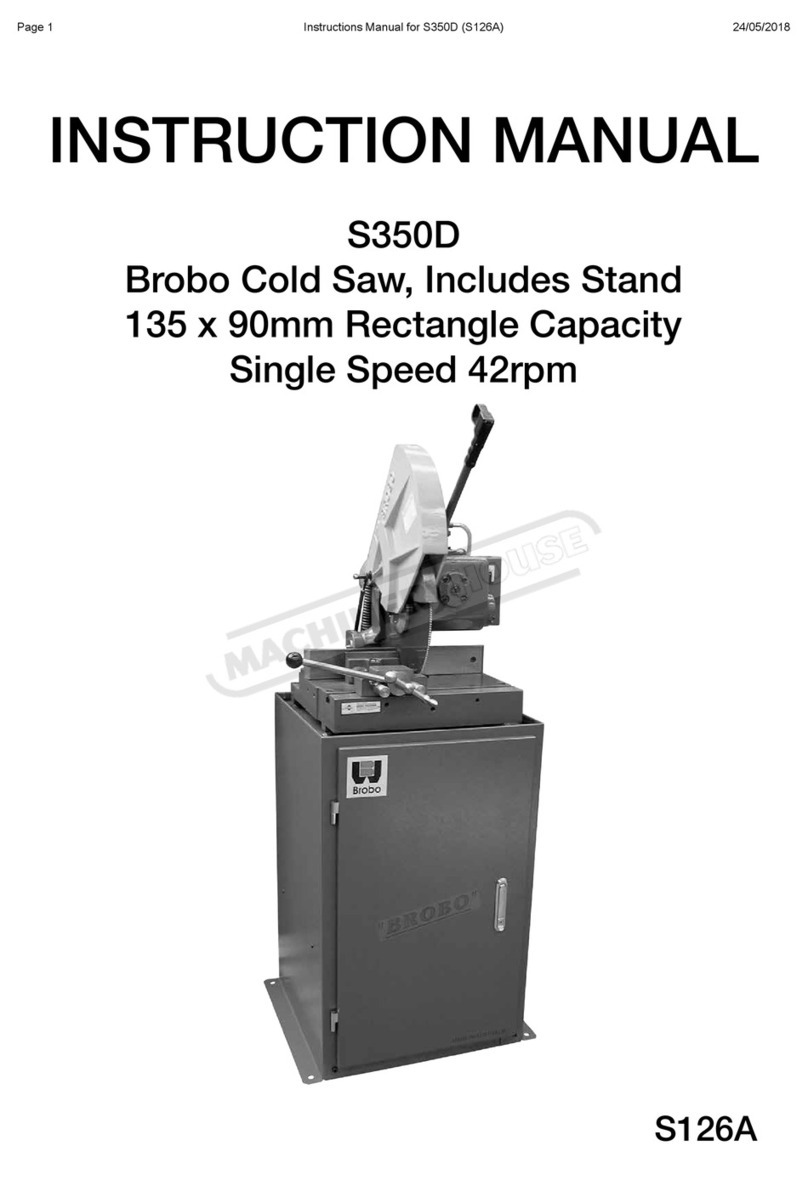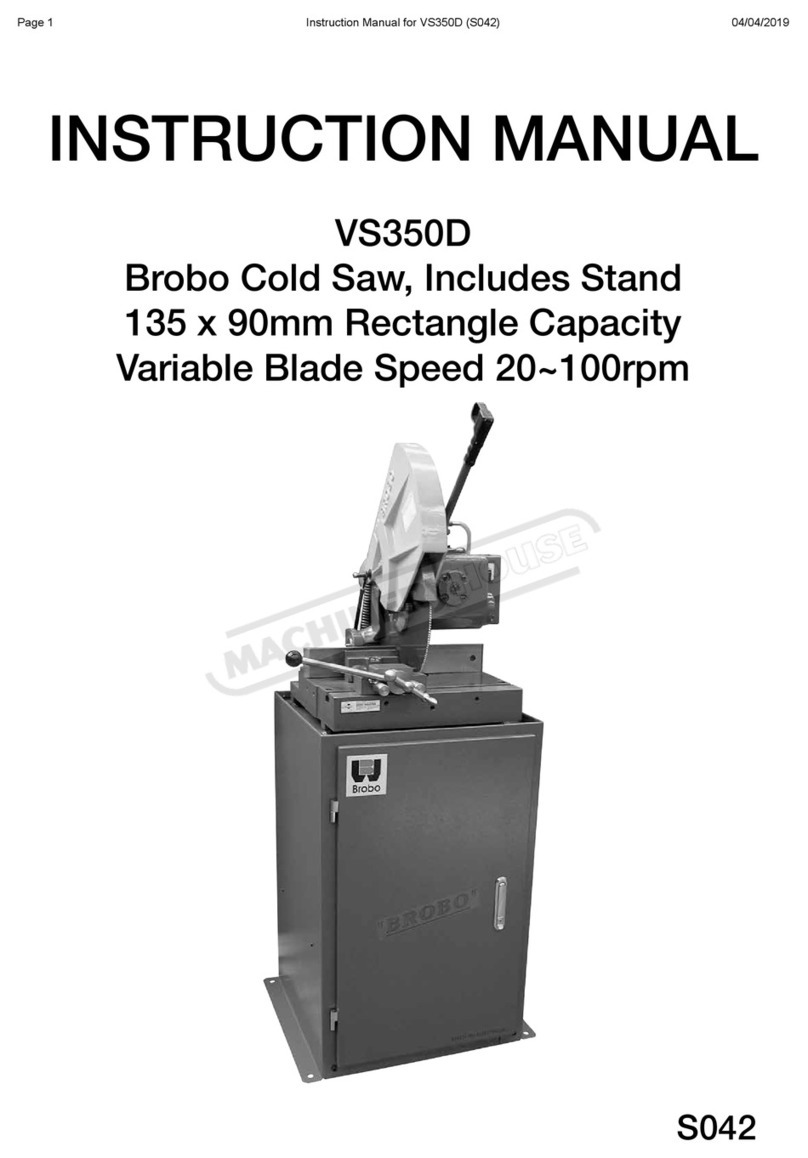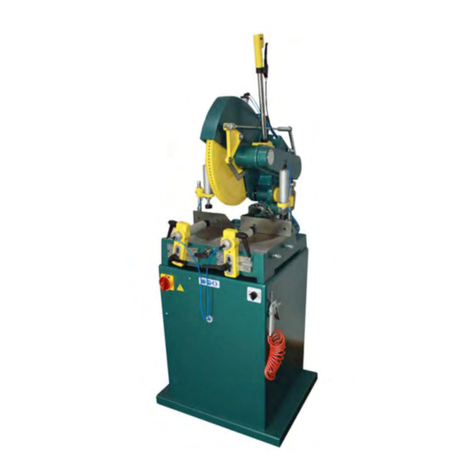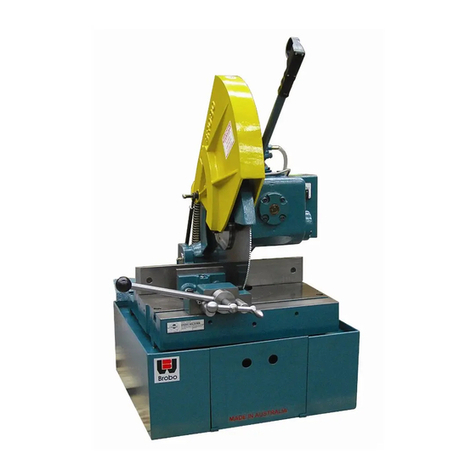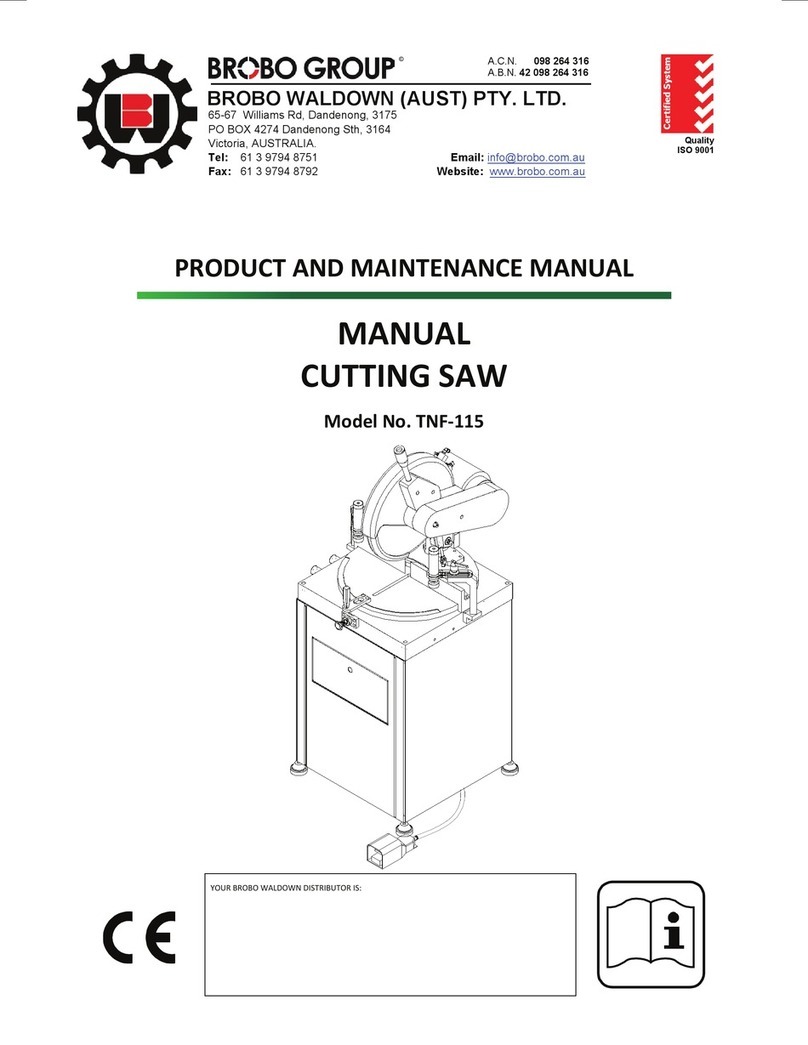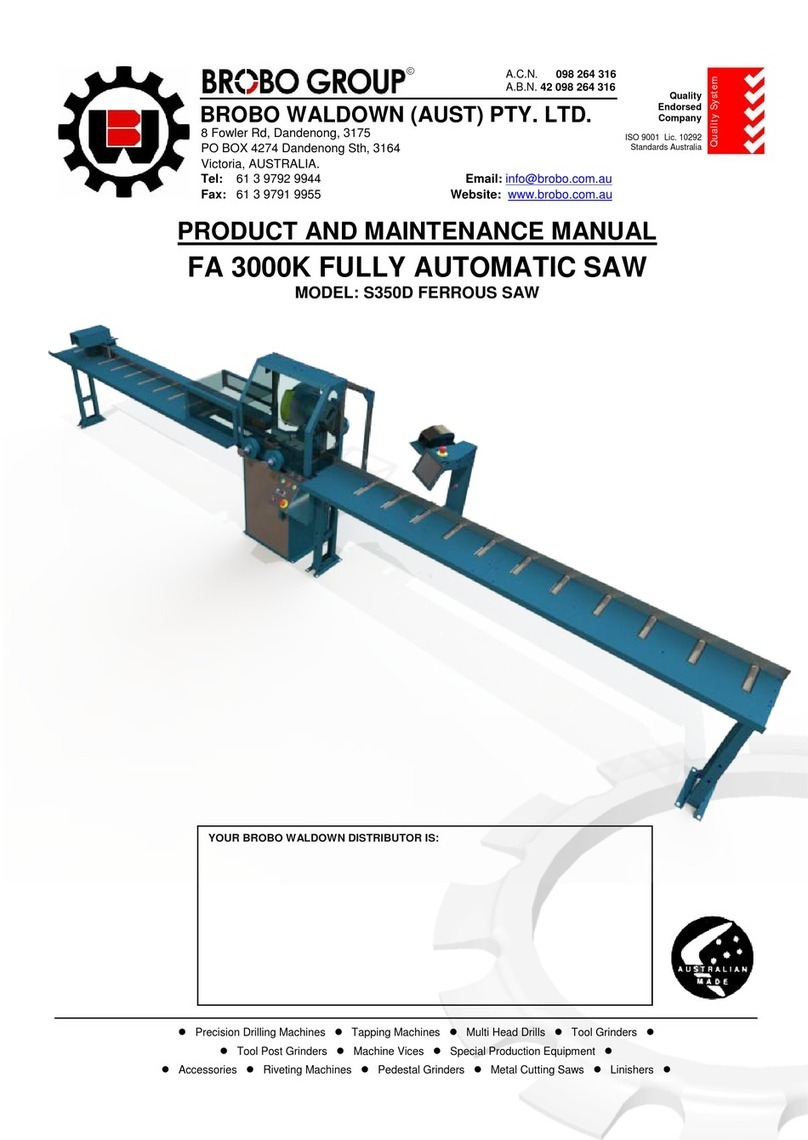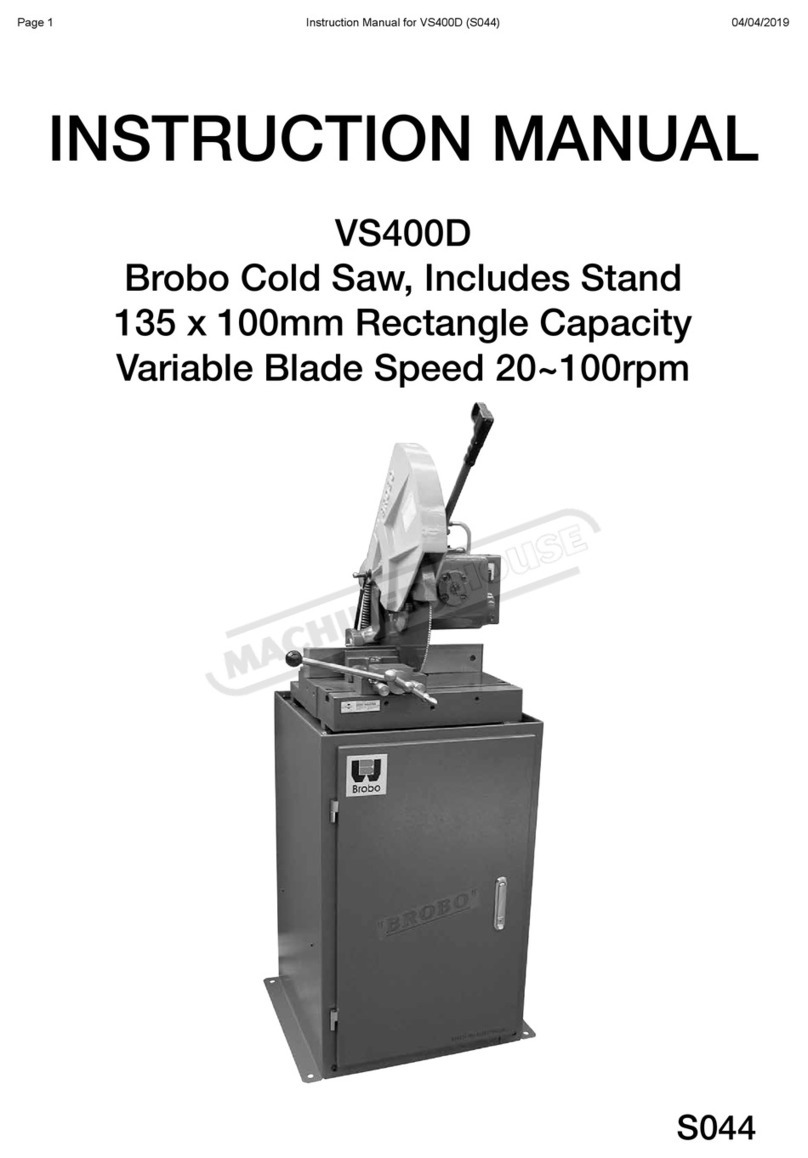
8
Fowler
Road
Dandenong
South
Vic
3175
brobo.com.au
10
+61 3 9794 8751 [email protected] 11 PART 3 SAFETY & ACCIDENT PREVENTION
The Brobo Group S315/S350/S400 Series Metal Cutting Saw has been designed & man-
ufactured in accordance with Australian Standards. It is HIGHLY RECOMMENDED that the
instructions & warnings contained in this chapter be carefully followed for correct usage of
the machine.
OPERATION OF THE MACHINE
The Brobo Group S315/S350/S400 Series Metal Cutting Saw is specifically designed to
cut ferrous & non-ferrous metal cross sections with solid or thin-walled profiles. Other types
of material & machining are not compatible for use with the specifications of the saw. This
machine involves a high-speed blade rotation; therefore extreme caution is required when
operating the device.
The employer is responsible for instructing the personnel who, in turn, are obliged to inform
the operator of any accident risks, safety devices, noise emission & accident prevention reg-
ulations provided for by national & international laws governing the use of the machine. The
operator must be fully aware of the position & functions of all the machine’s controls.
All those concerned must strictly adhere to ALL instructions, warnings, & accident prevention
standards in this manual.
The following definitions are those provided for by the EEC DIRECTIVE ON MACHINERY No.
98/37/CE:
Danger Zone - any zone in and/or around a machine in which the presence of a person con-
stitutes a risk for the safety & health of that person.
Person Exposed - any person finding him or herself, either completely or partly in a danger
zone.
Operator - the person or persons are given the responsibility of installing, operating, adjust-
ing, maintaining, cleaning, repairing, & transporting the machine.
NOISE LEVEL
The noise level of an idling metal saw, fitted with a 180-tooth blade (supplied as standard
by Brobo Group) has been measured to be below 85 dBA. This complies with the Australian
Occupational Health & Safety (Noise) Regulations 1992.
Please note that peak impulse noise levels will be experienced due to variables including blade
characteristics, type, & condition. This will also vary accordingly depending on the size &
type of sample being cut. Under these circumstances, management should make available
to the operator(s) the appropriate hearing protection equipment as prescribed under the
above-stated act.
WARNING – UNAUTHORISED MODIFICATIONS/REPLACEMENTS/USE
The manufacturer declines any responsibility whatsoever, either civil of criminal,
in the case of unauthorised interference or replacement of one or more parts or
assemblies on the machine, or if accessories, tools & consumable materials used
are different from those recommended by the manufacturer, or if the machine is
inserted in a plant system & its proper function is altered.
